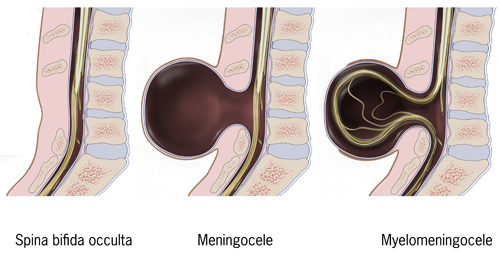As National Spina Bifida Awareness Month, October is dedicated to raising awareness of the birth defect.
Spina Bifida is the most common permanently disabling birth defect in the United States and the term literally means ‘split spine’. It occurs when the backbone that protects the spinal cord does not form and close as it should. This results in varying degrees of damage to the spinal cord and can lead to problems with walking and bowel and bladder control.
There are four types of Spina Bifida: Occult Spinal Dysraphism (OSD), where a child has a dimple in their lower back. With OSD, the spinal cord may not grow correctly, causing serious problems as the child matures.

Spina Bifida Occulta is often called “hidden Spina Bifida”. Close to 15% of healthy people have it without knowing because it usually does not cause harm and has no visible signs.
Meningocele causes part of the spinal cord to come through the spine like a protruding sac. Individuals with this condition may experience minor disabilities.
The most severe form of the defect is Myelomeningocele, also known as Spina Bifida Cystica. It occurs when part of the spinal cord and nerves come through an opening of the spine, causing nerve damage and other disabilities. Seventy to ninety percent of children with this condition also have too much fluid on their brains causing pressure and swelling. Without treatment, a person’s head develops too large and may suffer brain damage.
Currently, doctors don’t know what causes the development of spina bifida, but believe that genetic and environmental factors may cause the condition.
What is known is the best prevention of Spina Bifida—folic acid. We, along with the Spina Bifida Association, ask that all women of child-bearing age take 400 mcg (0.4 mg) of folic acid each day. At a minimum, women planning on becoming pregnant should begin taking the supplement at least one month prior to conception and then throughout the pregnancy.
Help us raise awareness of this debilitating birth defect by finding an event in your area or sharing this blog post.
If you or your family need support for Spina Bifida, visit the website of the Spina Bifida Association at spinabifidaassociation.org.




